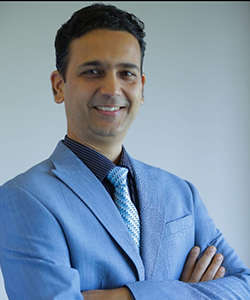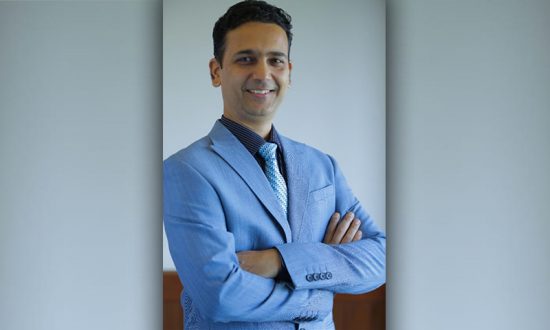In India, providing in-person healthcare is challenging, particularly given the vast geographical distances and limited resources. Today, in this time of social distancing, Telemedicine can play an important role in cases where there is no need for the patient to see the medical professionals physically. “Future of Telemedicine is bright as it has three major benefits, namely improved access to care, improved cost and time effectiveness, and improved quality and monitoring. However, several barriers make its adoption slower, especially in India,” says Dr. Pramod Tripathi, Founder, Freedom From Diabetes. In an email interaction with CXO Outlook, Dr. Pramod Tripathi talks about the gaining popularity of Telemedicine in India. As a Diabetes researcher, he also gives some tips for maintaining healthy blood sugar levels during a lockdown. Excerpts.
As people are forced to stay inside their house, can Telemedicine help the Indian healthcare system in rising to the demands of the pandemic crisis?
Telemedicine is the exchange of medical information from one location to another using electronic communication. Telemedicine has multiple applications and can be used for different services, which includes wireless tools, email, two-way video, smartphones, and other methods of telecommunications technology. As people are forced to stay inside their house due to lockdown, it has, and it is going to be an essential tool in meeting the rising demands of the pandemic crisis in India and the world at large.
Telemedicine has become a necessity. In your opinion, what was the reason behind the slow adoption of Telemedicine in India? What will be the future Telemedicine from now?
Telemedicine has shown success; however, several barriers make its adoption slower, especially in India. Missing the comfort in traditional face to face practice for doctor and patient is one of the significant obstacles. Then comes lack of investment in technology to suit one’s need (even if the technology is available, lack of comfort or mental barriers towards it), technically challenged staff, and concerns over online money transfer, age, preference and education level of the patient.
Future of Telemedicine is bright as it has three significant benefits, namely improved access to care, improved cost and time effectiveness, and improved quality and monitoring.
The MCI and the NITI Aayog have developed new guidelines for registered medical practitioners to deliver consultations to patients via Telemedicine. What will change under the newly announced telemedicine regulations?
The purpose of MCI ad NITI Aayog guidelines is to give practical advice to doctors so that all services and models of care used by doctors and health workers are encouraged to consider the use of Telemedicine as a part of standard practice. These guidelines will assist the medical practitioner in pursuing a sound course of action to provide useful and safe medical care founded on current information, available resources, and patient needs to ensure patient and provider safety.
Telemedicine can offer access to quality opinion, diagnosis remotely, especially in Tier II/ Tier II segments. How is it going to change the Indian healthcare sector?
It is difficult to predict the changes precisely. As private players, technology partners, aggregators, government start developing sustainable models within the huge healthcare sector. Telemedicine will make inroads and become the new normal in the years to come.
More people are working-from-home, and their physical movements are very restricted during the lockdown time. It is a challenging situation for diabetes patient. How can they overcome it and achieve the goals of treatment?
Yes, it is a challenging time for all, especially diabetics. But there are sets of exercises which can be done even without stepping out of home and these do give all the required benefits. Here are a few tips:
Try to concentrate more on exercise than diet in this lockdown phase.
Being homebound means less activity, less mobility and less exercise. Thus increases the risk to other health problems because of lack of movement.
Thus, one should include certain homebound easy exercise to be physically active, like:
- Deep breathing exercise (Pranayamas)
- Range of motion (ROM) – Neck exercises, Head tilts, forward and back AND side to side AND Head turns, arms and elbow exercise, hip and waist twisting, leg movements
- Chair bound yoga (Chair Suryanamskar)
- Chair base-exercise (sitting and stretching)
- Since there is no walking movement outside the house, one can do an extra set of stairs climbing.
- 10-30 minutes of work out should be included in daily routine.
- Nitric Oxide Dump with 1-litre bottle
- Skipping ropes
As a Diabetes researcher, what are your tips for maintaining healthy blood sugar levels during a lockdown? In general, what are anti-viral foods to boost immunity?
Here are a few tips that every person with diabetes should follow to maintain healthy blood sugar levels.
- Maintain fasting and pp sugar levels below 140
- Maintain BP < 130/80
- Eat a calculated amount of calories to maintain the requirement of the body. This will help to lose or gain weight as per the requirement and to maintain body weight close to the ideal/ desirable body weight.
- As far as possible, try to eat high fibre foods (whole grains, pulses, and all green vegetables) as well as greens and vegetables. During breaks take equal quantity of grain, daal, cooked vegetables and salads.
- Eat fewer fruits.
- Eat diet low in glycemic index, which helps keep the blood sugars in a normal range.
- Filtered mustard oil, groundnut oil, rice bran oil and gingelly oil can be preferred. Olive oil is best used for salads.
- Drink sufficient amount of water. 250 ml per 10 kg of body weight
- Sleep before 11 pm.
Some anti-viral foods useful during lockdown are:
- Ginger and garlic: They are both powerful anti-viral foods and contribute to boosting one’s immune system. Fresh ginger contains both antibacterial and anti-viral properties. Ginger is believed to help prevent viral infections by increasing the body’s temperature. It also works by flushing out toxins from your body. Garlic is anti-viral, antibacterial and anti-fungal, and it is especially effective against viruses if chewed raw. You can take mashed ginger and star anise, and make a concoction by adding little raw, unpasteurized honey.
- Star anise (Chakraful): This flower-shaped spice contains Shikimic Acid that is used as a base material for the production of Tamiflu, which is used for influenza virus. It is super powerful as an anti-viral. Take star anise and boil it in water and add it to your teas like green tea or black tea. You can also use this as a part of your kadhas.
- Coconut oil: Lauric acid and caprylic acid present in it are essential for boosting the immune system against viral infections. You can have 1-2 teaspoons along with the kadha that we generally make with Tulsi, ginger, cinnamon and various spices.
- Resveratrol: Resveratrol is a plant compound that acts as an antioxidant. Foods rich in Resveratrol such as peanuts, pistachios, grapes, blueberries, cranberries, strawberries and even cocoa and dark chocolate are helpful to fight fungal infection, ultraviolet radiation, stress and injury.
- Vitamin C rich foods: These include foods such as amla, red peppers, yellow peppers. Vitamin C supplements are a must-have to improve body immunity. Having lemon in hot water is an excellent vitamin C recipe to boost up your immunity.
- Anti-viral herbs: Anti-viral herbs such as Oregano, Tulsi (basil leaves), dried thyme and turmeric are great for boosting immunity and can be used in teas or curries for respiratory health, including mucous problems. One can mix ginger, garlic along with a tablespoon of thyme, oregano and make tea. One can inhale essential oils like thyme, oregano, eucalyptus or star anise. Can also use a diffuser in the room.
About Dr. Pramod Tripathi
 Dr. Pramod Tripathi, an MBBS from BJ Medical College, Pune is an acclaimed Diabetes researcher and Founder of Freedom From Diabetes. His papers have been published in International Journals such as the International Journal of Diabetes and Endocrinology, American Journal of Internal Medicine and many more.
Dr. Pramod Tripathi, an MBBS from BJ Medical College, Pune is an acclaimed Diabetes researcher and Founder of Freedom From Diabetes. His papers have been published in International Journals such as the International Journal of Diabetes and Endocrinology, American Journal of Internal Medicine and many more.
Since his early medical career, he has taken a keen interest in creating vibrant health for masses. With a Professional Diploma in Diabetes Management from Nanavati hospital, certification in Advanced Yoga and Ayurveda from Tilak Maharashtra Vidyapeeth in Pune, a Certified Master NLP Practitioner and Advanced NLP-K Practitioner he has since led the way in the research for the reversal of Diabetes as an ailment.
He has applied the protocols of Holistic Health Management to his program and ranks among the top influential leaders in the field of holistic health. The Diabetes Reversal program, at Freedom From Diabetes, has seen immense progress wherein about 5000 plus have been freed from diabetes medicines, 1000 plus have been freed from the use of insulin.


